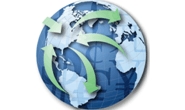Government/Policy

June 19, 2018
Global Forum on Excess Steel Capacity Postponed
Written by Sandy Williams
A meeting of the Global Forum on Excess Steel Capacity scheduled for Wednesday in Paris has been postponed until September as trade tension intensifies among world leaders.
The agenda for the ministerial meeting of the 33-member Forum was to include discussions on preferential policies that China and other countries apply to their steel industries, as well as adoption of a report recognizing Beijing’s efforts to reduce steel capacity.
According to a report by Macquarie Research, China has cut about 180 million tons of steel capacity in the past three years and, if they remain on course, will bring annual steel crude steel production to below 1 billion tons in 2018.
The last ministerial meeting was held in November in Berlin. At that time, members agreed to gather and verify data regarding capacity and production and share information on steps to eliminate market-distorting subsidies. At a meeting in May at the Organization for Economic Cooperation and Development, members expressed concern about its data sharing process and the announcement by President Trump implementing global tariffs on steel and aluminum.
“Our understanding is that China has not been as forthcoming as they should be in terms of providing subsidy information and information on capacity to update the information they submitted last year in the forum,” said Jean Kemp, senior vice president of government affairs and trade policy for the Steel Manufacturers Association. “The idea is to continue to put pressure on all members to be forthcoming, but particularly we would like to see some progress from China.”
Commerce Secretary Wilbur Ross criticized the Forum for its substitution of “conversation for action” and its failure to produce near-term results.
OECD Secretary General Angel Gurria said the Global Steel Forum is still young and although multilateral actions take longer, they are more sustainable.
“Well, first of all the life of this youngster that we created to address this particular issue is very short still. It’s mainly a teenager yet,” he said. “It cost a lot of trouble in order to get everybody on board including China, and then to start delivering on the information. You’re talking here about plant-by-plant capacity, market-by-market, country-by-country, types-of-steel-by-types of-steel. It’s not very sexy, it doesn’t make the headlines, but this is the only thing that will get us there.”






